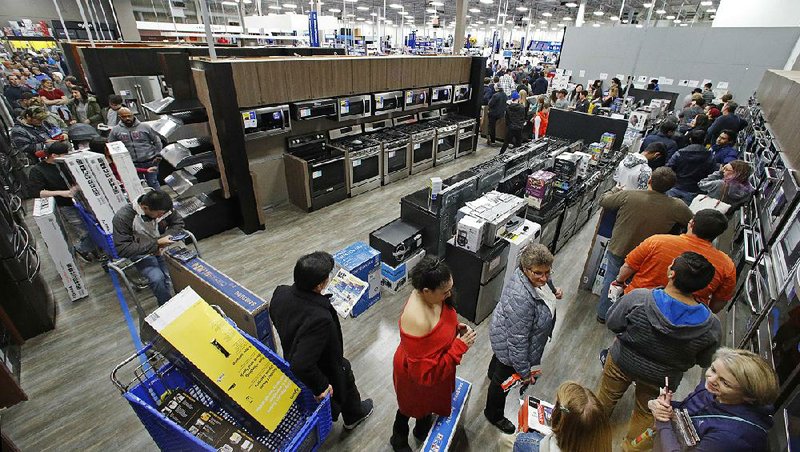Americans' spending rose by more than forecast in October, giving the biggest part of the economy a solid start to the quarter, while a measure of underlying inflation cooled to the slowest since February.
Purchases rose 0.6 percent after a downwardly revised 0.2 percent advance, Commerce Department data showed Thursday. The median forecast in a Bloomberg survey called for a 0.4 percent gain. Incomes increased 0.5 percent, more than projected and the most since January, partly reflecting government subsidy payments to farmers.
Excluding food and energy, the Fed's preferred price measure rose 1.8 percent from a year earlier, missing forecasts for 1.9 percent. The central bank targets 2 percent inflation including all items, though it looks to the core gauge as a better indicator of underlying price trends.
Analysts predicted that inflation will head even lower in coming months as energy prices fall, a development that should boost consumer spending by giving households more to spend on other items.
"With the collapse in gasoline prices likely to provide a sizable boost to households' purchasing power over the next couple of months, the outlook for consumption remains positive, even with the boost from the earlier tax cuts now fading," said Paul Ashworth, chief U.S. economist with Capital Economics.
Americans' spending is poised to keep driving growth this quarter, supported by a strong job market, lower taxes and improving finances that also will likely boost holiday spending. Even with the weaker inflation readings, the Fed is widely anticipated to move ahead with an interest-rate increase in December, though the pace of moves beyond that is less certain.
"On inflation, the core figure was pretty benign, you're just below the 2 percent goal," said Scott Brown, chief economist at Raymond James in St. Petersburg, Fla. Inflation is likely to rebound "because of the big impact from tariffs and wages going up," with price gains heating up at the start of 2019 and then cooling later in the year.
There were several caveats in Thursday's figures: The saving rate fell to 6.2 percent, the lowest this year and matching the lowest since 2013. Incomes were boosted by an $11.6 billion increase for farmers, which includes the subsidy payments. And the biggest contributor to the increase in services spending was household electricity and gas, which tends to reflect weather swings.
A separate Labor Department report Thursday showed filings for U.S. unemployment benefits rose for a third week to the highest level since May, potentially reflecting volatility around two consecutive periods that included holidays.
So-called core prices, which exclude food and energy, increased 0.1 percent from the previous month, less than the median estimate of a 0.2 percent rise. The main gauge rose 0.2 percent from the previous month, in line with projections, though it was up 2 percent from a year earlier, compared with forecasts for 2.1 percent.
The report follows comments Wednesday by Fed Chairman Jerome Powell interpreted by investors as supporting the idea that policymakers are increasingly open to pausing their series of increases next year, though he said he expects inflation to remain near 2 percent.
Consumer spending, which accounts for about 70 percent of the economy, had been projected to moderate this quarter after rising in the previous three months at a 3.6 percent annualized pace that was revised down from 4 percent. The economy also is forecast to cool, after the best back-to-back quarters of growth since 2014.
Wages and salaries rose 0.3 percent in October for a second month, adding to steady gains this year, Thursday's data showed. Real disposable income, or earnings adjusted for taxes and inflation, was up 0.3 percent after a 0.1 percent increase.
Even so, while hiring remains strong and the unemployment rate is the lowest since 1969, workers' paychecks have yet to show a sustained, robust acceleration.
Consumer spending is closely watched because it accounts for 70 percent of economic activity. The government reported Wednesday that the overall economy, as measured by the gross domestic product, grew at a 3.5 percent rate in the July-September quarter. Economists are looking for GDP growth to slow to around 2.5 percent in the current quarter. But for the year, they expect GDP will grow by around 3 percent, the strongest performance in 13 years.
Information for this article was contributed by Martin Crutsinger of The Associated Press and by Katia Dmitrieva and Shobhana Chandra of Bloomberg News.
Business on 11/30/2018
